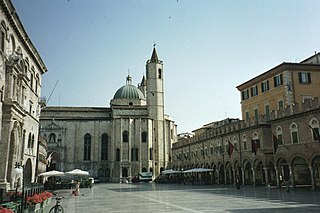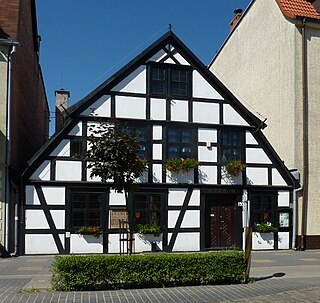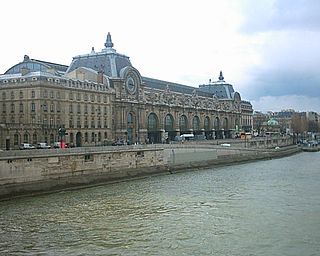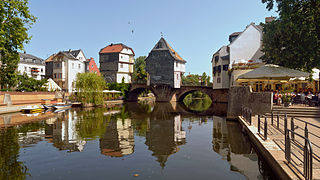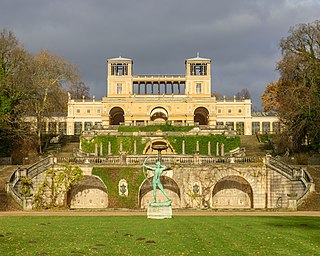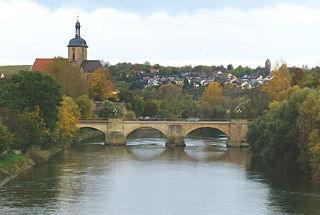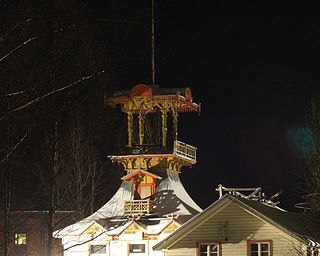
Villa Haux is a villa in the Art Nouveau style built in 1908 by architects Richard Böklen and Carl Feil in the southern German town of Ebingen.
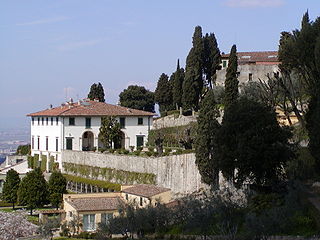
A villa was originally an ancient Roman upper-class country house. Since its origins in the Roman villa, the idea and function of a villa has evolved considerably. After the fall of the Roman Republic, villas became small farming compounds, which were increasingly fortified in Late Antiquity, sometimes transferred to the Church for reuse as a monastery. Then they gradually re-evolved through the Middle Ages into elegant upper-class country homes. In modern parlance, "villa" can refer to various types and sizes of residences, ranging from the suburban semi-detached double villa to residences in the wildland–urban interface.

Art Nouveau is an international style of art, architecture and applied art, especially the decorative arts, that was most popular between 1890 and 1910. A reaction to the academic art of the 19th century, it was inspired by natural forms and structures, particularly the curved lines of plants and flowers.

Ebingen is a town in the large district of Albstadt, district Zollernalbkreis, in the German state of Baden-Württemberg. It is located on the river Schmiecha, a left-hand tributary of the Danube, south of Tübingen and west of Ulm.
It was built for Kommerzienrat Friedrich Haux (1860–1929), entrepreneur in the local textile industry, between his factory and a railway line crossing the town on a bridge.

His previous residence and office, built as functional timber-framing house in 1885 on the same place and just decorated neo-baroque in 1898, was relocated across a street.

A structure relocation is the process of moving a structure from one location to another. There are two main ways for a structure to be moved: disassembling and then reassembling it at the required destination, or transporting it whole. For the latter, the building is first raised and then may be pushed on temporary rails or dollies if the distance is short. Otherwise, wheels, such as flatbed trucks, are used. These moves can be complicated and require the removal of protruding parts of the building, such as the chimney, as well as obstacles along the journey, such as overhead cables and trees.
The new villa was equipped with most modern installations, such as elevator, central heating and central vacuum cleaner.
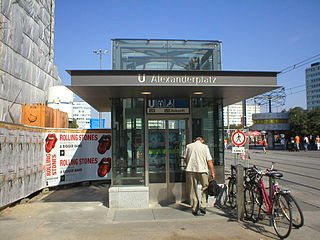
An elevator or lift is a type of vertical transportation device that moves people or goods between floors of a building, vessel, or other structure. Elevators are typically powered by electric motors that drive traction cables and counterweight systems like a hoist, although some pump hydraulic fluid to raise a cylindrical piston like a jack.

A central heating system provides warmth to the whole interior of a building from one point to multiple rooms. When combined with other systems in order to control the building climate, the whole system may be an HVAC system.

A vacuum cleaner, also known as a sweeper or hoover, is a device that uses an air pump, to create a partial vacuum to suck up dust and dirt from floors and from other surfaces such as upholstery and draperies.

The Haux family lived in the houses until 1954. Afterwards, the new villa was used for their business and rented to various users. From 1978 it was empty. In 1991 a new owner started renovating it. Today the Klaiber-Schlegel tax advisor society owns and uses it. Some rooms are available for cultural events.
A tax advisor or tax consultant is a person with advanced training and knowledge of tax law. The services of a tax advisor are usually retained in order to minimize taxation while remaining compliant with the law in complicated financial situations. Tax Advisors are also retained to represent clients before tax authorities and tax courts to resolve tax issues.
In the old villa, there was a pharmacy from 1964 until 1991. Since then it is a pub. The railway is abandoned.

Pharmacy is the science and technique of preparing, dispensing, and review of drugs and providing additional clinical services. It is a health profession that links health sciences with pharmaceutical sciences and aims to ensure the safe, effective, and affordable use of drugs. The professional practice is becoming more clinically oriented as most of the drugs are now manufactured by pharmaceutical industries. Based on the setting, the pharmacy is classified as a community or institutional pharmacy. Providing direct patient care in the community of institutional pharmacies are considered clinical pharmacy.


